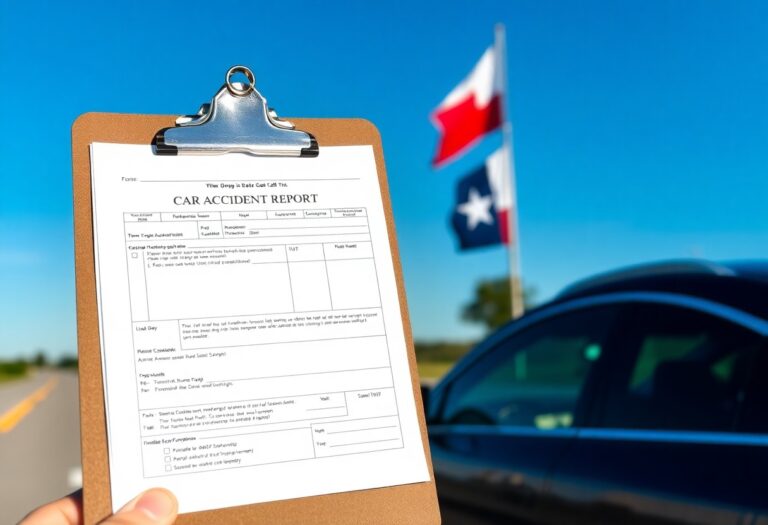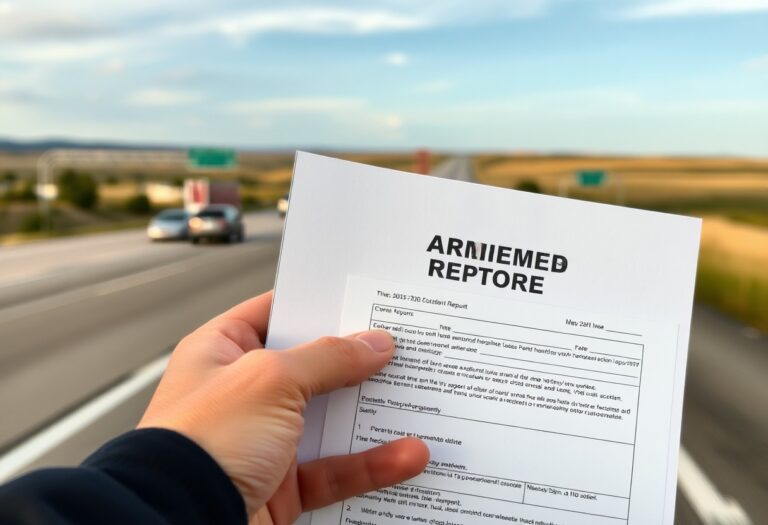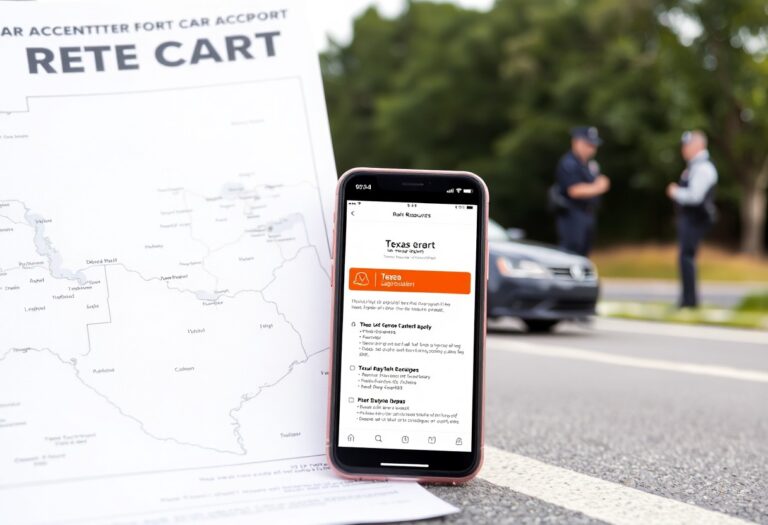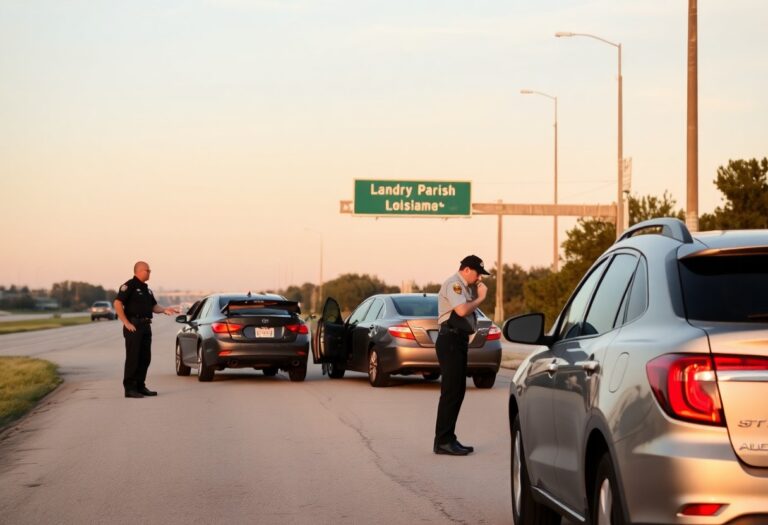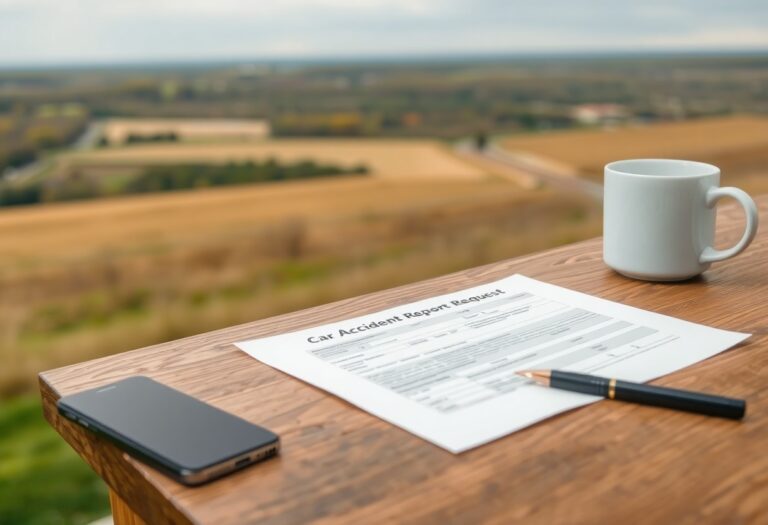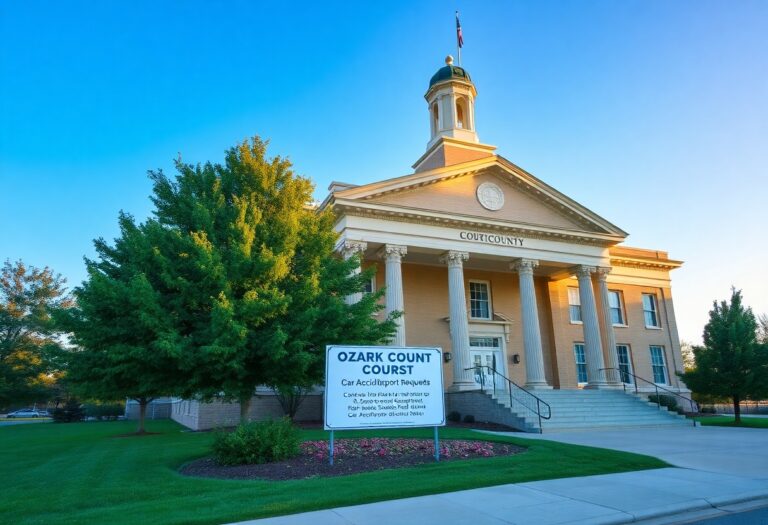Just like any other unexpected event, a car accident can leave you feeling overwhelmed and unsure about the next steps. In this guide, you will discover imperative steps to take after an accident, from gathering important information at the scene to filing your report accurately with local authorities in Lane County. Understanding the process not only helps protect your rights but also ensures that you can navigate any claims that may arise effectively. Stay informed and empowered as you handle this challenging situation.
Navigating the Immediate Aftermath of a Collision
After a collision, you must shift your focus to ensuring safety and gathering imperative information. The scene can be chaotic, and dealing with shock can cloud your judgment. First, make sure you and your passengers are safe, and then move to a place away from traffic if possible. Contact emergency services to report the accident, especially if injuries are involved. Collect details from all parties involved, including insurance and contact information. Document everything with photos and notes, as this information will be vital for your accident report.
Assessing Injury and Safety
Your health is the top priority following a car accident. Check yourself and your passengers for any immediate injuries, such as cuts, bruises, or more severe trauma. If anyone has difficulty moving or experiences pain, seeking medical attention promptly should be your next step. Minor injuries can escalate if not treated right away, making your evaluation thorough but quick.
The Importance of Evacuation Procedures
Understanding and executing proper evacuation procedures can significantly decrease the risk of further harm after a collision. If vehicle safety is compromised due to fire, smoke, or debris, getting to a safe distance is imperative. Alerting other drivers, especially in multi-car accidents, can help prevent additional collisions in the vicinity. Knowledge of local evacuation routes may also come in handy during severe accidents involving hazardous materials.
In Lane County, familiarity with evacuation routes can be a lifesaver during emergencies. For example, having a mental map of alternative roads can aid your swift departure from a compromised scene. Also, when involved in a multi-vehicle accident, a well-coordinated evacuation minimizes chaos and ensures everyone’s safety. If serious accidents occur, be prepared to assist the injured while waiting for emergency responders. Every second counts in these situations, making your awareness and readiness invaluable to yourself and others around you.
Personal Information and Documentation Essentials
Gathering personal information and documentation after a car accident in Lane County is vital for both your safety and potential claims. Start by exchanging names, addresses, phone numbers, and insurance details with other drivers involved. Documenting the time, date, and location of the accident also plays a key role in establishing the context of the incident. Keeping a record of medical attention received and any subsequent claims strengthens your case, ensuring all parties are held accountable.
Collecting Driver and Witness Accounts
Engaging with drivers and witnesses at the scene can provide valuable insights into the circumstances of the accident. Collect each person’s contact information and ask them to provide a brief account of what they observed. Their perspectives can be instrumental in reconstructing the accident narrative, as independent witnesses may verify details that support your claim or reveal contradictions in other accounts.
The Role of Photographic Evidence in Claims
Photographic evidence serves as a powerful tool in substantiating your account of the accident. Capturing images of vehicle damage, scene layout, road conditions, and any visible injuries adds a visual layer to your narrative. This evidence can be particularly compelling in discussions with insurance adjusters, providing undeniable proof that reinforces your claims. Include pictures that showcase license plates and any relevant traffic signs or signals to give a complete overview of the incident.
In numerous cases, insurance adjusters rely heavily on photographic evidence to assess liability and damages. For instance, in a Lane County accident involving significant vehicle damage, a clear image of the impact area can lead insurers to quickly determine fault. Additionally, if medical claims arise, photographs documenting your injuries can establish the severity of your condition and correlate with medical bills, making it imperative for you to prioritize this evidence immediately after an accident.
Understanding Oregon’s Reporting Mandates
Oregon law outlines specific mandates for reporting car accidents to ensure accountability and proper documentation. All drivers involved in an accident must report the incident if it results in injuries, fatalities, or property damage exceeding $2,500. Additionally, if a vehicle is towed from the scene, a report must be filed. Understanding these requirements will help you navigate the process with greater confidence and efficiency.
When to Report: Deciphering Oregon Law
In Oregon, you are required to report an accident if someone is injured, killed, or if there is property damage exceeding $2,500. Even if you feel the damage is minor, filing a report is advisable to protect yourself legally. The necessity for reporting applies equally whether you are at fault or not, ensuring that relevant legal recourse is available should any disputes arise later.
Key Details Required in an Accident Report
When completing your accident report, specific details are mandatory to provide a clear account of the incident. Required information includes the date, time, and location of the accident, the names and contact information of all drivers and witnesses, vehicle registration numbers, insurance details, and a concise description of how the crash occurred. Accurate, thorough information is vital in ensuring that your report reflects the truth of the situation, helping facilitate any necessary investigations.
Additionally, you should include any pertinent circumstances that may have contributed to the accident, such as weather conditions, road hazards, or traffic signal statuses. Documenting any visible injuries sustained by individuals involved will strengthen your report. Photographs of the scene, vehicle damage, or any relevant signage can further support your account. Thoroughness in collecting and reporting these details can bolster your case and aid legal proceedings, should they arise following the incident.
Crafting a Comprehensive Accident Report
Creating a thorough accident report is key to ensuring all details are accurately captured for future reference and claims processing. Begin by meticulously documenting the scene, including vehicle damage, weather conditions, and any relevant traffic signs. Include eyewitness accounts and take photographs to support your narrative. Utilize clear, concise language to explain the sequence of events leading up to the accident, as this will help convey the facts to insurance companies or law enforcement.
Step-by-Step Guide to Filing with Authorities
| 1. Gather Information | Collect details from all involved parties and witnesses. |
| 2. Call 911 | Notify law enforcement and ensure emergency services are dispatched if needed. |
| 3. Submit Accident Report | File a report with your local police department or DMV within 72 hours. |
| 4. Obtain Copies | Request copies of the police report and any other relevant documents for your records. |
Common Pitfalls to Avoid in Report Submission
Submitting your accident report requires attention to detail to avoid setbacks. Ensure all required documents are completed and submitted on time, as late filings can hinder your ability to claim insurance or even lead to penalties. Avoid omitting important details or failing to include all involved parties, as this could complicate investigations and claims processes.
Submitting an incomplete or inaccurate report can lead to unnecessary delays in processing your insurance claim and may result in reduced compensation. Keep in mind that missing crucial evidence, such as eyewitness statements or photographic proof, can weaken your case. Always double-check your report for accuracy, completeness, and adherence to organizational guidelines before submission to avoid these common pitfalls.
Leveraging Your Report for Insurance Claims
Your accident report serves as an vital tool when navigating the insurance claims process. By providing clear and specific details of the incident, you can effectively communicate the circumstances to your insurance provider. The thorough documentation of facts, witness statements, and photographs can significantly strengthen your case, ensuring that you receive the compensation you deserve. Being proactive in gathering all relevant information will help facilitate the claims process and mitigate potential disputes over liability or damages.
Connecting the Dots: Reporting and Coverage
Insurance coverage hinges on the accuracy and completeness of your accident report. Each detail noted can influence how your policy responds to your claim. For instance, including the exact location, conditions, and parties involved helps clarify liability and coverage applicability, making it pivotal to gather and present this information meticulously.
Navigating the Claims Process with Confidence
Equipped with a well-documented accident report, you can approach the claims process with assurance. Each step, from filing your claim to negotiating settlement offers, benefits from the clarity provided in your report. Notably, you are in a position to counter any pushback from the insurance adjusters by referencing specific details from your documentation, making it more challenging for them to deny or undervalue your claim.
Understanding the claims process enhances your negotiation power and ensures you don’t miss critical deadlines or requirements. For instance, your insurer might have a limited time frame to respond based on your specific circumstances, so presenting a comprehensive report early can significantly expedite the process. Moreover, having your report at hand allows you to adequately address any contradictions or discrepancies that may arise during discussions with the insurance company. This preparedness can often lead to a smoother resolution, aligning compensation with the full extent of your damages and losses.
To wrap up
The process of reporting a car accident in Lane County, Oregon, can be straightforward if you follow the necessary steps. You should prioritize your safety, document the scene thoroughly, and communicate effectively with law enforcement. Your insurance company will also need specific information to assist with your claim. By understanding these steps and procedures, you can navigate the aftermath of an accident with greater confidence. Always seek professional assistance when needed to ensure you’re adhering to Oregon law and protecting your interests.







